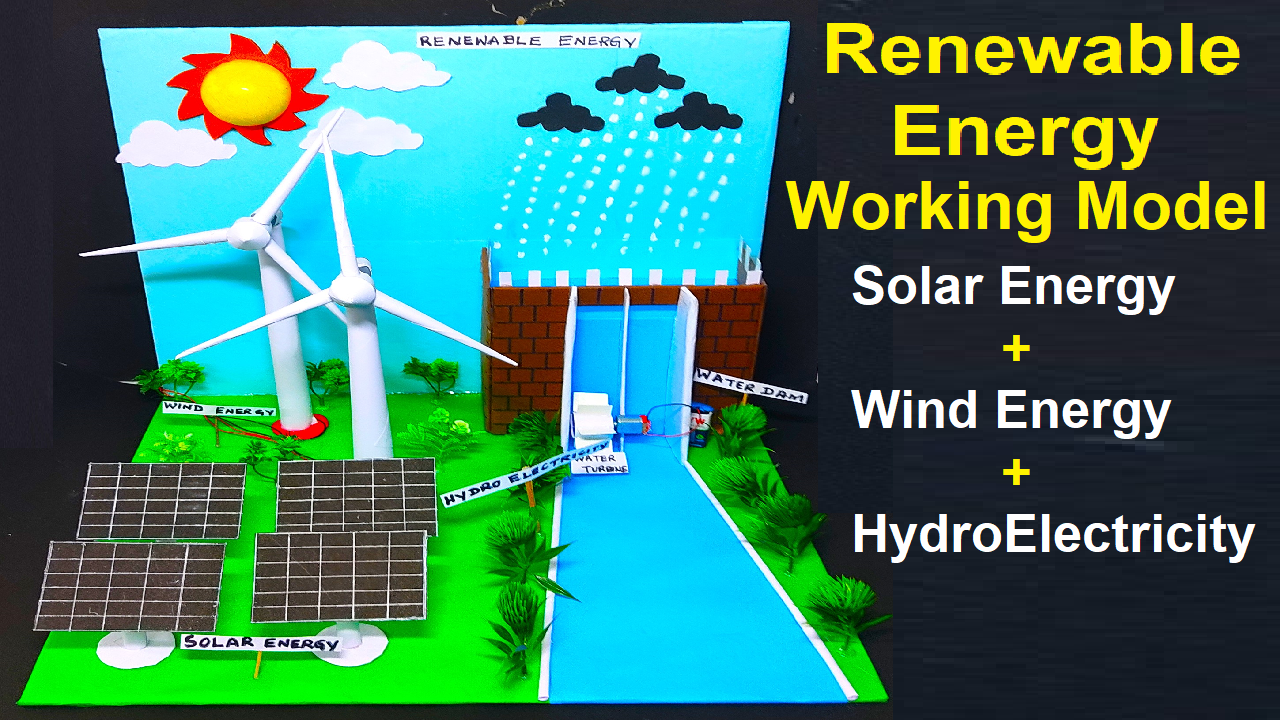A solar wind hydropower working model demonstrates the integration of three renewable energy sources—solar, wind, and hydropower—into a single system to generate electricity. The model simulates how these natural forces can be harnessed together to produce sustainable energy. It is a great way to showcase how combining multiple energy sources can create a more efficient and reliable power system.

Key Components of the Model:
- Solar Panel: A solar panel is used to convert sunlight into electrical energy through photovoltaic cells.
- Wind Turbine: A small wind turbine is used to convert wind energy into mechanical energy, which is then transformed into electricity.
- Water Turbine: A miniature water turbine is placed in a container with flowing or moving water, simulating a hydropower system. The turbine generates electricity as water flows over its blades.
- Generator: Each energy source (solar, wind, and hydropower) is connected to a small generator, which converts mechanical or electrical energy into usable power.
- Battery: A battery stores the generated energy from all three sources for later use.
- Connecting Wires: Wires are used to connect the solar panel, wind turbine, water turbine, generator, and battery to form a complete circuit.
How It Works(solar wind hydropower working model) :
- Solar Energy Conversion: When sunlight hits the solar panel, it converts the sunlight into electricity, which is sent to the battery or generator for storage.
- Wind Energy Conversion: As wind blows, the blades of the wind turbine rotate, generating mechanical energy. This is converted into electricity by the connected generator.
- Hydropower Conversion: Water flowing through the water turbine causes its blades to spin, generating mechanical energy that is also converted into electricity by the connected generator.
- Energy Storage: The electricity generated from all three sources is stored in the battery. This stored energy can then be used to power small devices or lights, or be distributed for other purposes.
Applications and Learning:
- Real-Life Insight: This model demonstrates how combining solar, wind, and hydropower can provide a reliable, sustainable energy solution, especially in remote or off-grid areas.
- Educational Value: It helps explain the principles of renewable energy, energy storage, and the concept of hybrid power systems that reduce reliance on nonrenewable sources.
This model is an engaging way to show how different renewable energy sources can work together to generate electricity and promote sustainable energy solutions.

